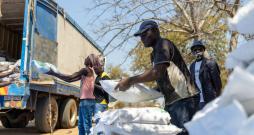When rain doesn’t fall like it used to
Ugandan farmers use new methods to adapt
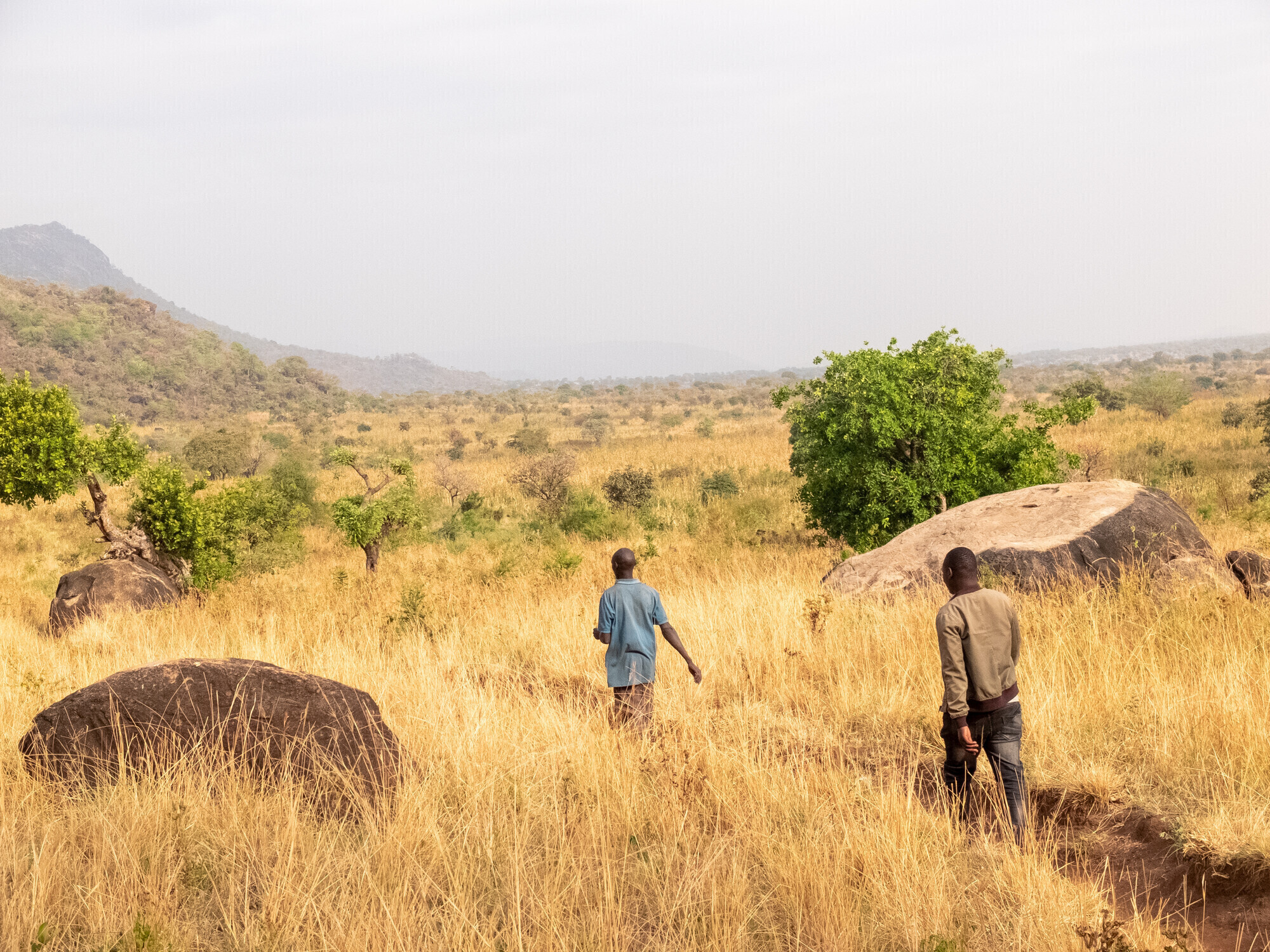
Joseph Obonyo, 89, balanced himself on a stool in the dirt yard outside his family home as Kachapangole villagers gathered in the shade to listen to his memories about what the weather used to be like in their area of Uganda.
Back then, he says, rains came in January to cool the soil. And in February, farmers plowed the land and planted seeds that would sprout in the March rains.

With just a few exceptions, he and other farmers could count on the rain to continue until the millet, sorghum, maize, beans and sunflowers were grown.
Not so much anymore, says Christine Longoli, who lives in the same neighborhood. She says the temperature during the dry season has increased so much that she can no longer walk barefoot in the fields, and steady rains aren’t likely to come until April.
About 50 years younger than Obonyo, she doesn’t remember the January rains, but she does remember when they used to come in March. Now they are more likely to come in April and end anytime between September and November.
In 2021, rains stopped in June and into July, another thing that didn't happen in Obonyo's day. The dry spell destroyed her soybean crop and reducing her maize yield to about one-third of what it was the year before. Rains began again in July and continued into the fall.
The rains this year are minimal so far, says Henry Loboke, an MCC project coordinator, so farmers in northeast Uganda again are expecting low yields.
But MCC’s partner, Dynamic Agro-pastoralists Development Organization (DADO), has been working with more than 150 local farmers to help them adjust their agricultural practices to the hotter, drier climate.
Protect the soil and vary the crops
One of the techniques Longoli uses is to dig holes in the ground before the rain comes. When the rain arrives, the water gathers in the holes, preparing the soil for the seed.
In the dry season, she has managed to increase her sorghum yield by fertilizing the seed with cow dung and keeping the moisture in the soil by covering it with compost.
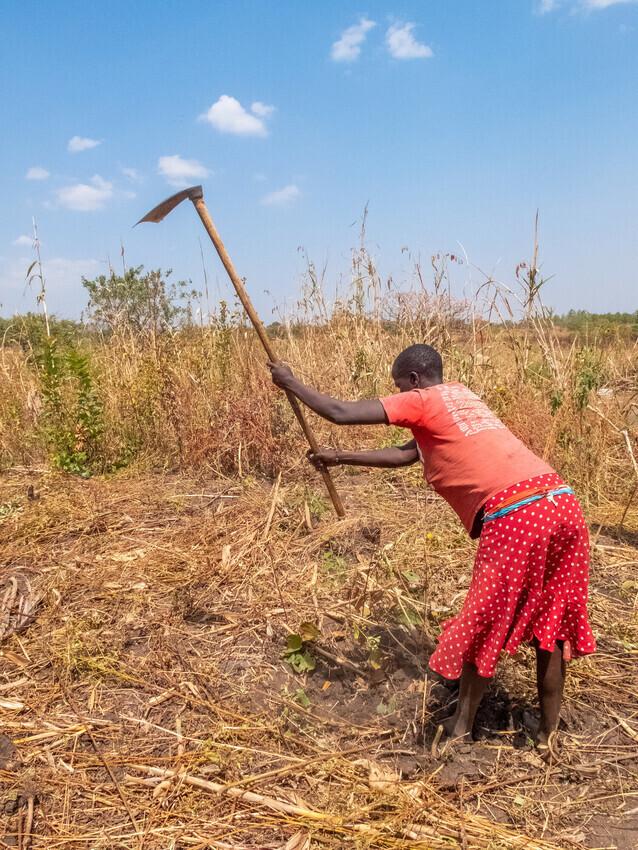
When she plants maize (corn), she no longer scatters seeds, but instead plants them one by one in a row, saving on the cost of seeds. After the corn is growing, she adds cowpeas among the corn, which help to protect the corn from disease and to provide compost when the peas are done producing.
To the grains she normally plants, she now adds eggplant, cabbage, onion, cabbage and tomato. “If rains fail, I cannot sleep hungry,” she says, “but I can continue harvesting vegetables that I have planted. I go to the borehole and fetch water to sprinkle on the vegetables, so I can harvest when it doesn’t rain.”
Increasing the variety of crops, instead of relying on one crop that could fail, is part of DADO’s teaching. In a nearby town, Samson Dekeny grows sweet potatoes and cassava, also a root vegetable, in addition to many vegetables, maize, cowpeas and fruit trees.
He counts on selling sweet potatoes to pay for his children’s education, medical bills and other emergencies, but in February he was very worried. The short Christmas rains, which usually fall, didn’t appear this year, so the sweet potatoes either weren’t developing or were diseased.
However, between the dew and some rain in late March, he was able to harvest a reasonable crop of sweet potatoes. He also collected a small crop of cassava, after porcupines and drought took their toll, by adding compost around the plants.
Dekeny is doing his part to address one cause of the problem. “We know that rains come because we protect the environment by having trees, by planting more,” Dekeny says. Therefore, he planted 50 trees, including mango trees to feed the family.
Protecting the yield
Protecting crops that do grow helps feed families in a time of scarcity.
DADO encourages farmers to embrace the wisdom of their elders by using granaries to protect extra food and seeds from rodents and insects, instead of hanging bags of seeds from a tree.
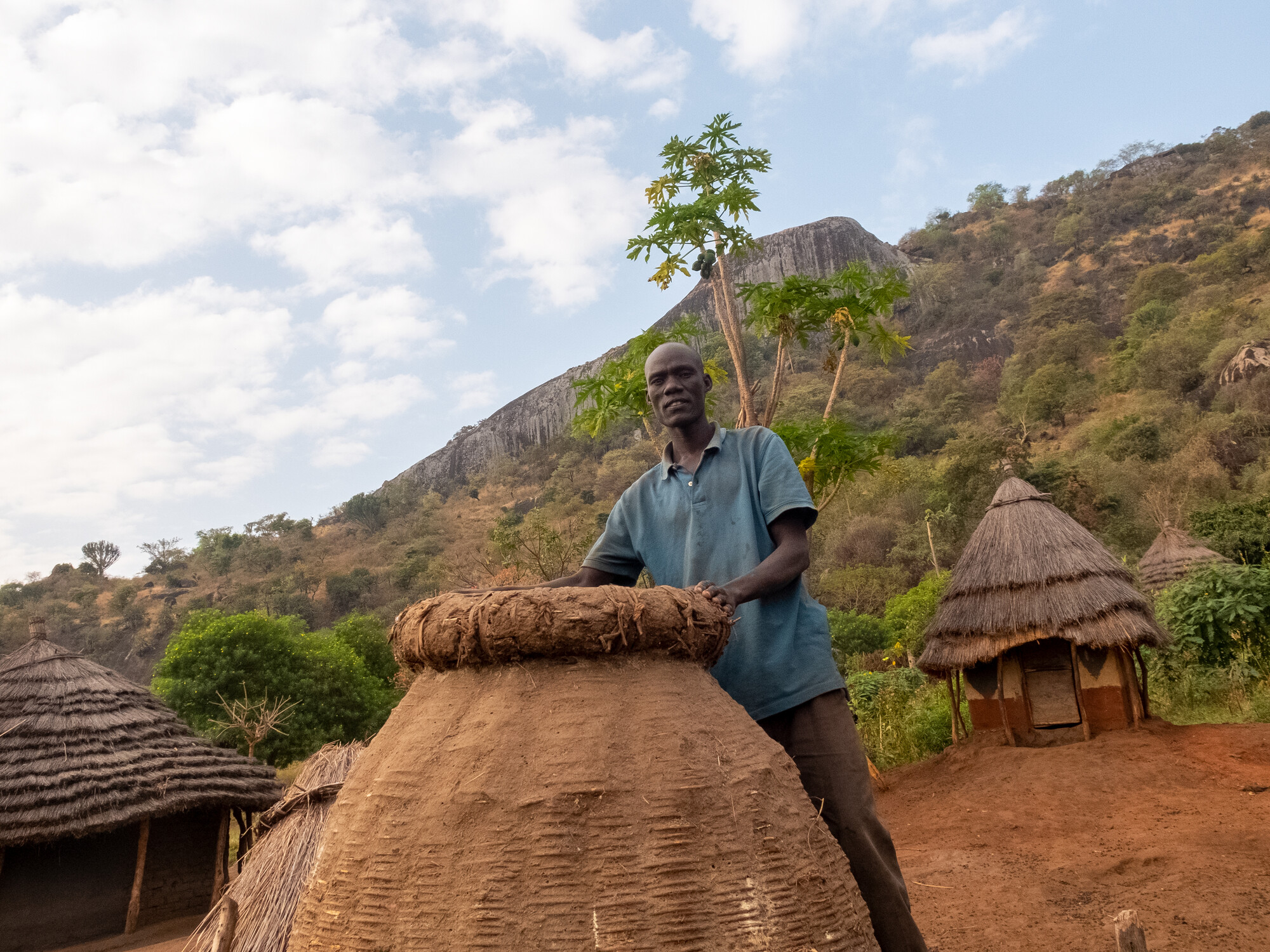
As a result, a group of artisans has learned how to make traditional granaries from the few remaining elders. They collect reeds from the forest and shape them into what look like overgrown baskets, called granaries. Once the spaces between the branches are covered in cow dung that dries into an odorless sealant, seeds and extra grains can be saved there.
Bees are especially helpful at protecting crops. They keep elephants from the nearby national wildlife park from eating the grains out of people’s houses and fields.
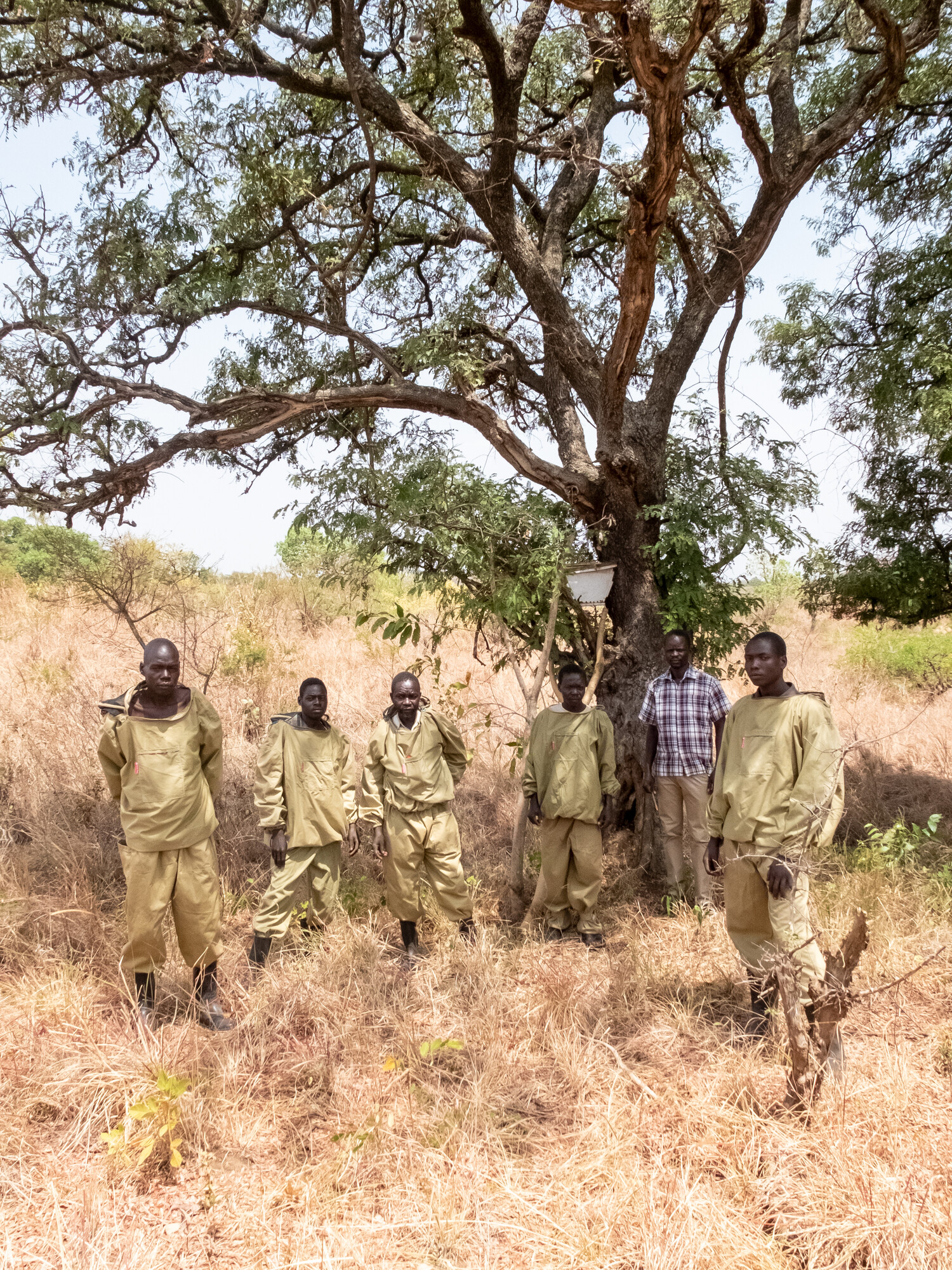
Robert Loketo and other beekeepers work with DADO to establish beehives along paths elephants use to get to villages. When the elephants walk by the beehives, they tend to stir up the bees who sting elephants’ tender ears and trunks, chasing them back to the wildlife park.
The beekeepers also eat and sell the honey, and they use the wax to make candles and soap. The profit is contributed to a local beekeepers’ savings group. Group members use the money to help pay for family emergencies and borrow from it to help them pay for school fees and other expenses.
Savings groups
DADO has encouraged the formation of community savings groups for about 120 people. This especially helps female farmers, who have the primary responsibility to care for their children.

Longoli, who has six children, says she has been able to save about 15,000 Uganda shillings ($4) each week. If she must, she will borrow to pay school fees, clothing and transportation to the hospital or town. She pays the money back with a small interest fee when she can sell products from her farm.
Participants say they can save better by putting the money in the treasury that is managed by two group members than having money at home, where it can easily be spent on small purchases.
Are these approaches enough?
Using all the new techniques, Dekeny and Longoli can manage to grow enough food to feed their families for about nine to 10 months. The hardest time is while the new crops are growing, but the harvest from last year has been consumed. Currently Dekeny says his family of six children, his wife and his mother are relying on wild vegetables plus a little corn from the old stock.
He is grateful for what he has learned from DADO. As a lead farmer, he invites farmers to come to see the variety of crops he plants, how he protects his soil and how he uses intercropping to get the best harvest he can.
He worries about the changing weather patterns and about whether enough farmers in the area will be willing to adapt their farming to minimize their hunger.
He fears that if the rains continue to decrease and if farmers don’t change their way of farming, famine will come. Famine causes disease. It leads people to steal cattle or to migrate to the cities.
“Yet agriculture is the backbone of this country, Uganda,” Dekeny says, and he’s committed to keep learning and to teach his neighbors how to cope amid a changing climate.
